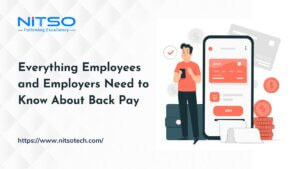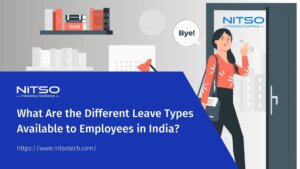Who doesn’t want more money or financial freedom? Most people would jump at the chance to have greater monetary benefits, yet many are unaware of ways to maximize the financial compensation and perks available to them. There are myriad monetary benefits that people often overlook or underutilize in their careers, personal finances, and even daily life.
This article will highlight some of the top monetary benefits that you may be missing out on and provide tips on how to take advantage of this “free money.” Whether it’s tax savings, employee benefits, bank perks, rewards programs, or government aid, there are more ways to pad your wallet than you may realize. Read on to uncover some of the best-kept secrets to accessing monetary incentives and keep more of your hard-earned cash where it belongs – in your pocket.
Table of Contents
What is Monetary Benefits Meaning?
Monetary benefits mean any form of compensation provided in the form of money or financial assets rather than non-cash perks. Monetary benefits are a key component of employee compensation and personal finances.
Types of Monetary Benefits
There are various forms of monetary benefits provided by employers and organizations to compensate and incentivize employees. The most common types include:
1. Salaries
Salaries refer to fixed regular payments made to employees. They are usually paid monthly or bi-weekly. Salaries provide a stable, guaranteed amount of income. Many organizations establish pay scales and grades that determine salary ranges for different roles and levels. Salaries often increase with greater responsibility and seniority.
Some key advantages of salaries include predictability, stability and security. Employees can rely on the same base amount each pay period. However, salaries also lack flexibility. There are limited options to reward excellent performance or new achievements.
2. Wages
Wages are hourly compensation based on number of hours worked. They are common for hourly workers, contractors, and union roles. Wages provide payment for actual time worked versus a fixed amount. This allows flexibility in schedule and pay. Wages incentivize attendance and hourly productivity versus annual performance.
Wages can fluctuate each pay period based on overtime and workload. While this provides an incentive to work more, it also leads to variability in income. Wages do not provide the same stability as salaries.
3. Bonuses
Bonuses refer to additional one-time payments awarded for notable achievements, milestones, or performance. They are usually tied to predetermined company or individual goals. Bonuses reward above-average contributions.
Common types of bonuses include:
- Annual performance bonuses for meeting KPIs
- Project completion bonuses for finishing major initiatives
- Signing bonuses for attracting top talent
- Referral bonuses for recruiting new employees
- Profit-sharing bonuses when companies achieve revenue goals
Bonuses incentivize productivity and support employee retention and recruitment. However, they are variable and not guaranteed compensation.
4. Commissions
Commissions provide pay based on a percentage of sales, deals, or other business generated. They are common in sales and business development roles. Commissions directly tie earnings to measurable business outcomes.
Commissions motivate employees to increase sales and revenues. However, commissions also lead to inconsistent fluctuating pay, similar to wages. There is a higher reward but also a higher risk.
5. Allowances
Allowances provide additional pay to compensate for specific necessary expenses. Common allowances include:
- Car allowances – Compensate for work-related travel
- Cell phone allowances – Reimburse mobile costs
- Internet allowances – Cover home internet expenses
- Housing allowances – Help with local housing/rental costs
- Uniform allowances – Reimburse uniform purchases and cleaning
- Childcare allowances – Assist with childcare costs
Allowances in salary help cover costs incurred for work. They provide financial relief and convenience. Allowances should be designed to align with actual expected expenses.
6. Reimbursements
Reimbursements repay employees for legitimate work-related expenses. This includes things like:
- Business travel costs – Flights, hotels, meals, transport
- Supplies purchases – Tools, equipment, furnishings
- Professional dues – Licenses, association fees, dues
- Training and conferences – Fees, travel costs
- Business meals – Dining and entertainment for clients
Reimbursements offset financial burdens and costs employees take on for their jobs. They ensure employees are not paying out-of-pocket for legitimate business expenses. Detailed policies help avoid abuse of reimbursement programs.
7. Pensions
Pensions provide regular retirement income to employees after they leave service. Pensions can be provided through defined benefit or defined contribution plans. Employers make ongoing contributions to fund future pension benefits.
Pensions enable employees to maintain income in retirement. They reward loyalty and retain employees for the long term. Pensions help attract top talent who value post-employment benefits. They also incentivize high performance to achieve higher salary and pension levels.
8. Government Benefits
Government monetary benefits include welfare, disability insurance, food stamps, Medicaid, housing vouchers, and other assistance. They provide income and support to struggling or unemployed individuals. Most benefits are means-tested to help disadvantaged groups.
Government benefits enable access to food, housing, and healthcare. They act as a safety net and protect against severe poverty. Benefits are designed to supplement wages and encourage employment.
What is the Difference Between Monetary and Non-Monetary Benefits?
Monetary benefits provide direct financial incentives to employees, while non-monetary incentives offer other types of rewards and perks that don’t involve direct cash payments. Understanding the key differences between the two is important for compensation management.
Comparison of Monetary and Non-Monetary Benefits
| Monetary Benefits | Non-Monetary Benefits |
|---|---|
| Paid in the form of money rather than goods or services | Do not increase employee’s net earnings |
| Have a defined cash value | Have no obvious cash value |
| Examples: Salary, bonuses, commissions, stock options | Examples: Flexible schedule, casual dress code, employee discounts |
| Directly increase employee’s earnings and net worth | Improve employee motivation, satisfaction and engagement |
| Often taxable as income | Typically not taxed as income |
| Seen as extrinsic rewards | Seen as intrinsic rewards |
| Help meet basic financial needs | Help meet higher level needs like personal growth |
Top 15 Monetary Benefits with Examples
Monetary benefits are highly valued job perks for employees in India. Companies offer various monetary incentives beyond salary to attract and retain top talent. Let’s examine some of the most popular monetary benefits provided by employers:
- Base Salary – This is the fixed amount of pay an employee receives, often stated in an annual amount. For example, Prateek’s base salary at Infosys is ₹15 lakhs per annum.
- Performance Bonuses – These are additional payments made to employees based on performance metrics like sales targets or project completions. For example, Priya received a ₹50,000 performance bonus for her excellent work this year.
- Commission/Incentives – Commissions provide pay based on sales or deals made. For example, real estate agents often work solely on commission, earning a percentage of their home sale prices.
- Overtime Pay – This provides higher pay rates for hours worked beyond normal schedules. For instance, company workers may get 1.5x their usual hourly wages as overtime pay for extra hours worked. If Raj makes ₹500 per hour at Wipro, he gets ₹750 as overtime pay.
- Stock Options/Equity – These provide the option to buy company stock at a set price. If the stock price rises, that provides a monetary benefit. For example, stock options enabled a start-up employee to buy shares at $1 each, which are now worth $20 per share.
- Retirement Plans – Companies match employee PF contributions up to 12% of salary. This equals free money for retirement.
- Health Insurance – Employers usually pay a large portion of employee health insurance premiums, providing a valuable monetary benefit that covers healthcare costs. For example, Infosys may cover 80% of an employee’s ₹12,000 yearly premium.
- Life Insurance – Companies often provide life insurance policies for employees at low or no cost, paying out cash benefits in the event of their death. For instance, a company may provide a life insurance policy worth 2x an employee’s salary.
- Disability Insurance – This provides pay if an illness or injury causes disability. For example, long-term disability insurance may pay 60% of an employee’s salary if they are unable to work for over 6 months.
- Paid Time Off – Paid time off, including vacation days and sick leave, provides continued pay during time away from work. For instance, companies may offer 15 days of paid vacation per year.
- Parental Leave – New parents get paid time off work through parental leave policies, providing a salary even while not working. For example, a company may offer 12 weeks of paid maternity leave for new mothers.
- Education/Tuition Reimbursement – Companies reimburse some or all of employee education expenses, providing a monetary benefit for career development. For instance, an employer may pay up to $5,000 annually in tuition reimbursement for job-related courses.
- Childcare Assistance – Some companies provide subsidies for childcare costs, covering a portion of employees’ childcare expenses. For example, a law firm may pay up to $500 per month in childcare assistance for attorneys with young children.
- Employee Discounts – Employees enjoy discounted pricing on company products and services, boosting purchasing power. For instance, a car manufacturer may offer employee discounts of $2,000 off the purchase of new vehicles.
- Relocation Packages – Companies provide lump sum payments or reimbursement of moving expenses when an employee needs to relocate for work. A relocation package may cover things like moving costs, temporary housing, real estate fees, etc.
Article you might be intrested in: Full and Final Settlements in Payroll: Everything You Need to Know It
Effects on Employee Motivation
The structure and amount of monetary benefits in an organization have significant effects on employee motivation and performance. Some key influences include:
- Drives Effort to Earn More: Employees are motivated to work harder and smarter when there is an opportunity to increase their pay. Commission structures, overtime eligibility, and performance bonuses incentivize employees to maximize output so they can earn more money.
- Increases Motivation for Goal Achievement: Monetary benefits like project bonuses and sales commissions make achieving company and individual goals more rewarding. Employees push themselves when they know their effort will directly impact their compensation.
- Instills Fear of Pay Cuts: On the flip side, the threat of pay deductions or reductions in benefits motivates employees through fear. People will work hard to avoid disciplinary action that leads to losing compensation.
- Damages Morale if Perceived as Unfair: Employee motivation suffers when monetary benefits are seen as unfair. Perceptions that certain people are overpaid or underpaid relative to their contributions create resentment. Equity in pay is key.
- Rewards Loyalty and Service: Pay structures that increase earnings consistently over time, like annual raises, reward employee loyalty and discourage turnover. Employees remain motivated when they see pay growing with tenure.
- Boosts Retention of Top Talent: Maximizing benefits helps retain top performers who have many job options. Strong performers expect to be compensated based on their contributions. Insufficient pay risks losing them.
Wrapping Up
There are numerous monetary benefits that companies provide beyond just salaries and wages. Some of the major monetary benefits we covered include performance bonuses, commissions, stock options, paid time off, tuition reimbursement and more. While basic pay is still essential, these additional financial incentives and perks make compensation packages more attractive.
With so many potential monetary incentives available, it pays to do your research. Make sure you understand and utilize all the monetary benefits offered by your employer. You may also want to explore other jobs or companies that provide extra monetary benefits relevant to your needs. A little time invested in reviewing your options can unlock hidden streams of “free money”.
The bottom line is that monetary incentives should play a key role in your career choices and financial planning. Seek companies and positions offering the strongest overall compensation, balancing salary with other monetary and non-monetary perks. Taking full advantage of these programs, incentives and policies will maximize your income and put more cash in your pocket.
Article you might be intrested in: Everything You Need to Know About Sick or Medical Leave Rules
FAQs Related to Monetary Benefits
Is salary a monetary benefit?
Yes, salary is considered a monetary benefit. Salary provides employees with fixed, guaranteed pay as part of their compensation package. The money received from salary is a direct monetary benefit.
What are monetary and non-monetary benefits?
Monetary benefits include direct financial compensation like salary, bonuses, commissions, and stock options. Non-monetary benefits provide other types of rewards like additional paid time off, flexible scheduling, work-from-home options, childcare assistance, and more.
What is an example of a monetary incentive?
Examples of monetary incentives include performance bonuses, overtime pay, profit sharing, retirement plan matching, sales commissions, and stock options. These provide employees with extra financial motivation and rewards.
What is the difference between monetary benefits and recognition?
Monetary benefits provide direct financial compensation. Recognition programs praise employees without monetary rewards, like employee of the month programs, shoutouts, or awards like plaques.
What is monetary income?
Monetary income refers to money received regularly from employment, investments, government benefits, or other sources. Salary, interest, dividends, and Social Security payments are examples of monetary income.
What are monetary examples?
Examples of monetary compensation include salary, hourly wages, tips, bonuses, profit sharing, commissions, allowances, overtime pay, and reimbursements.
What are 4 monetary incentives?
Four common monetary incentives are performance bonuses, signing bonuses, stock options, and spot bonuses for special achievements.
What are the types of monetary benefits for employees?
Common monetary benefits for employees include salary, health insurance contributions, 401k matching, life insurance, disability insurance, bonuses, profit sharing, overtime pay, and paid time off.
What are monetary awards?
Monetary awards provide direct financial compensation or cash payments to recipients. Common monetary awards employees may receive include performance bonuses, spot bonuses, safety awards, retention bonuses, and attendance awards.








0 Comments